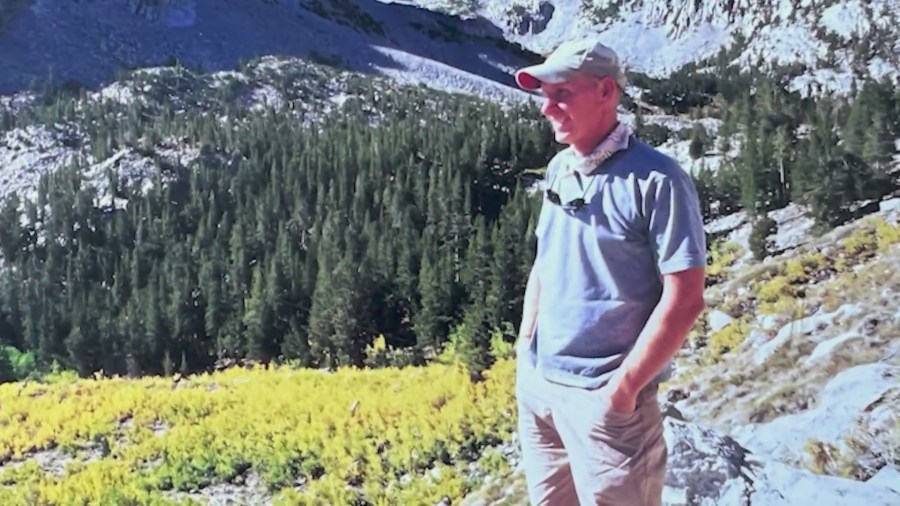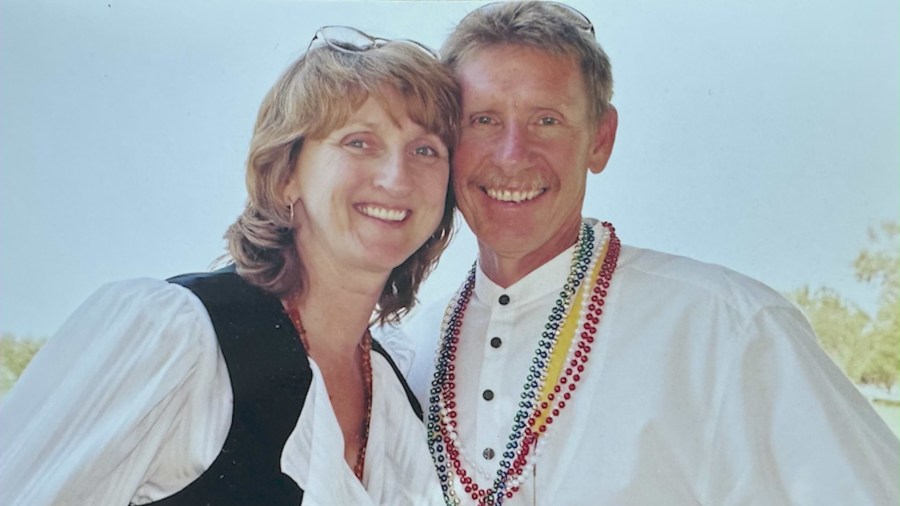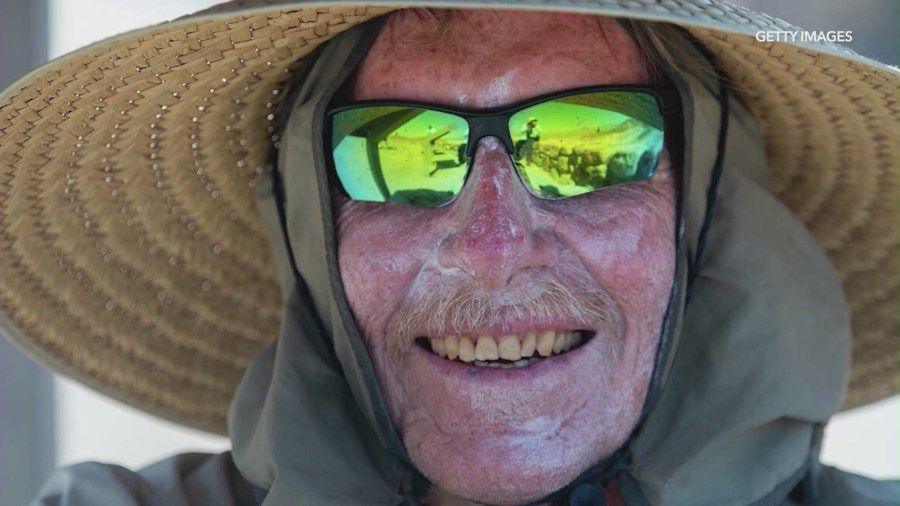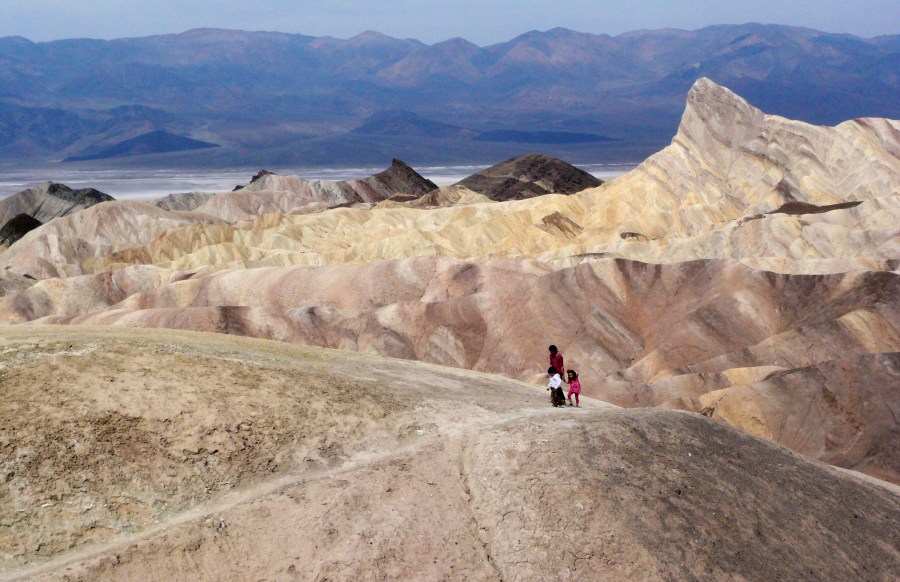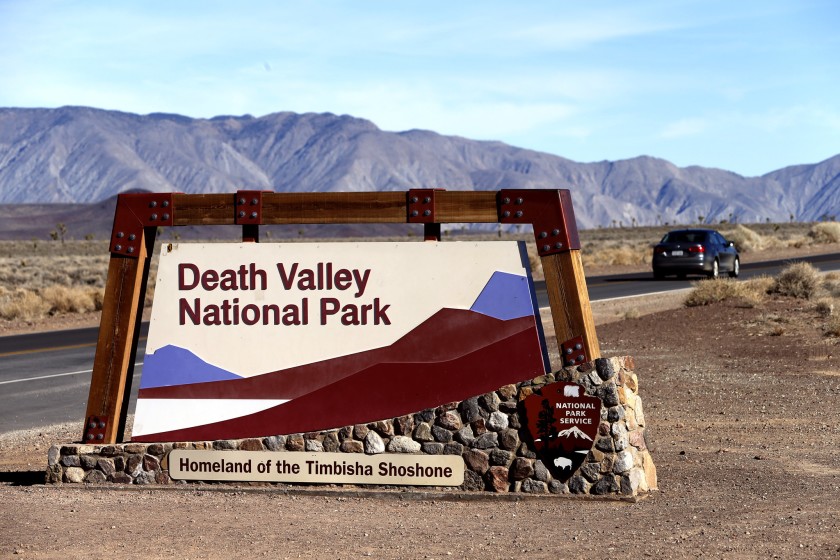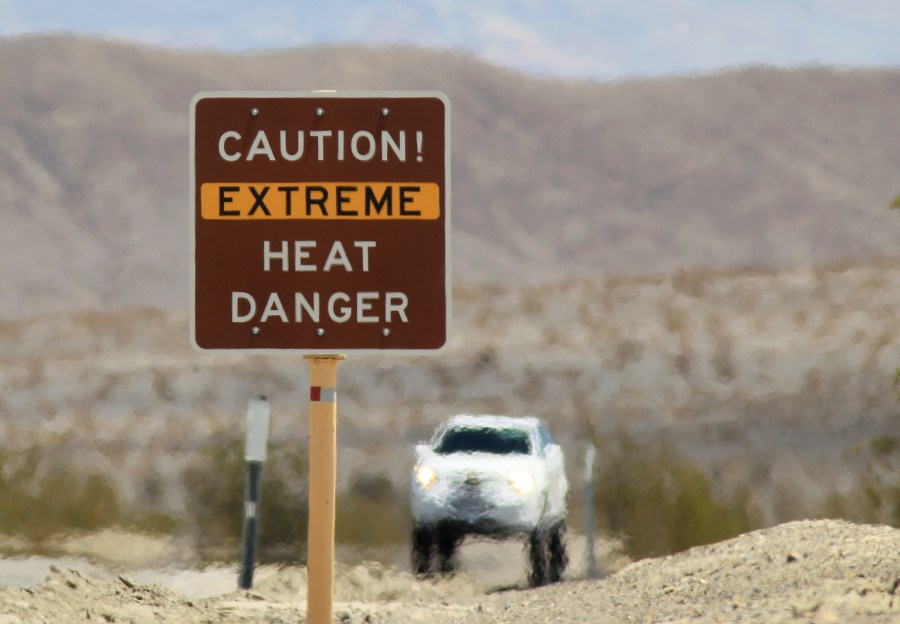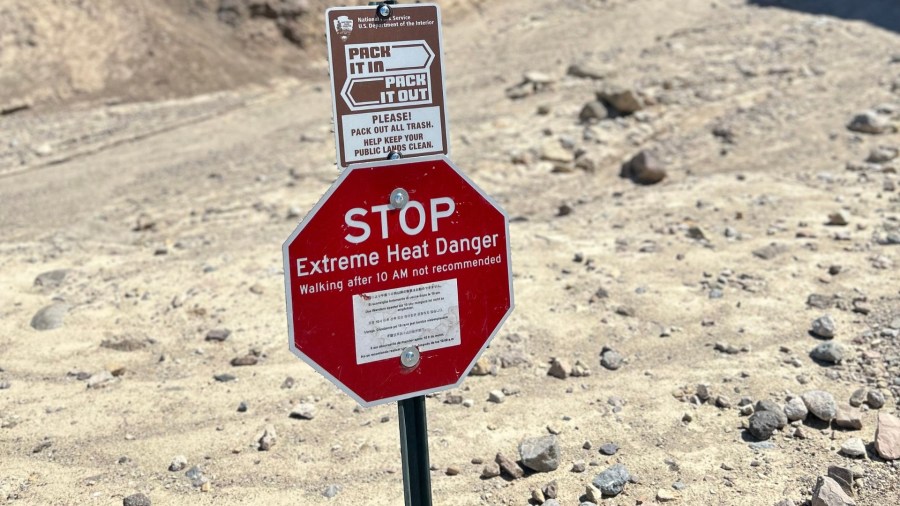A Los Angeles man who was found dead at a trailhead in Death Valley National Park was identified on Thursday.
The hiker was confirmed to be Steve Curry, 71, from Sunland, according to the Inyo County Coroner’s Office.
On Tuesday, Steve was found collapsed outside of a restroom at Golden Canyon around 3:30 p.m. amid a blistering heatwave as temperatures hit 121°F in the area.
National Park Service officials believe he had likely been hiking on the popular trail shortly before he died. Loved ones describe Steve as an adventurous and warm-hearted man.
“He just had this desire to go there,” said Rima Curry, Steve’s wife. “He wanted to take this one hike and it did him in. He was a loving man, very good soul, good-hearted, enjoyed people, loved the outdoors.”
Earlier in the day, Steve was interviewed at Zabriskie Point by a reporter with the Los Angeles Times. He was photographed “slathered in sunscreen, huddled beneath a metal interpretive sign that afforded a small amount of shade,” officials said.
According to the article, Steve had hiked to Zabriskie Point from Golden Canyon which was about two miles away. At some point, he left the Zabriskie and hiked back to the Golden Canyon trailhead where he had parked his car.
When Steve collapsed, other park visitors noticed him and called 911 for help. Crews from the National Park Service and the Inyo County Sheriff’s Office responded to the scene.
Park rangers arrived at 3:47 p.m. Despite administering CPR and using an automated external defibrillator (AED), they were not able to save Steve.
The coroner’s office has not yet determined Steve’s cause of death, however, park rangers suspect heat was a factor.
“The official temperature at the nearby Furnace Creek area was 121°F around the time of Curry’s death,” said NPS. “Actual temperatures inside Golden Canyon were likely much higher, due to canyon walls radiating the sun’s heat.”
Steve and Rima have been married for nearly 29 years and walked together every day through their Sunland neighborhood. Steve frequently liked to hike and explore the local mountains.
“He liked challenges,” said Frank De Luca, Steve’s neighbor. “I mean, he’s kind of an introverted Ironman type person.”
Loved ones said Steve, however, had heart problems and a lengthy hike in triple-digit temperatures may have been more than he could handle.
Rima said Steve began planning his Death Valley hike about two weeks ago and although she questioned his timing, she never thought it would be her husband’s last hike.
“He really, truly was a good soul,” said De Luca. “That’s going to be a big loss for all of us in this neighborhood.”
A GoFundMe campaign was created to help Steve’s family with funeral expenses.
Anyone planning to visit Death Valley in the summertime is urged to be cautious and prepared to face dangerous triple-digit temperatures.
Visitors are advised to go sightseeing in short distances from their vehicles or consider hiking in the park’s cooler mountain areas. Hiking at low elevations after 10 a.m. is not recommended, officials said.
Curry’s death is the second heat-related fatality in Death Valley this summer. On July 3, a 65-year-old man from San Diego was found dead inside his vehicle.
As California experiences a record-breaking heatwave, Death Valley, famously known as the hottest spot on Earth with the highest-recorded temperature of 134°F, continues to see a large number of visitors looking to experience the dangerous heat.
According to NPS, Death Valley has experienced 28 days of temperatures over 110°F this year alone.
Death Valley is a narrow, 282-foot (86-meter) basin that is below sea level but situated among high, steep mountain ranges.
The extremely dry air and spotty plant coverage allow sunlight to heat up the desert surface. Heat radiates back from the rocks and becomes trapped in the depths of the valley.
“Heated air rises, cools before it can rise over the valley’s mountain walls, and is recycled back down to the valley floor,” said NPS. “These pockets of descending air are only slightly cooler than the surrounding hot air. As they descend, they are compressed and heated even more by the low-elevation air pressure. These moving masses of superheated air blow through the valley, creating extreme high temperatures.”
Heat stroke remains a notable threat to visitors and is likely to set in when the body’s core temperature rises above 104°F, officials said.
Classic signs of heat stroke include:
-Throbbing headache
-Dizziness and light-headedness
-Lack of sweating despite the heat
-Red, hot, and dry skin
-Muscle weakness or cramps
-Nausea and vomiting
-Rapid heartbeat (either strong or weak)
-Rapid, shallow breathing
-Behavioral changes such as confusion, disorientation, or staggering
-Seizures and unconsciousness.
Anyone who may be experiencing these symptoms is advised to seek immediate medical help if a heat stroke is suspected.
